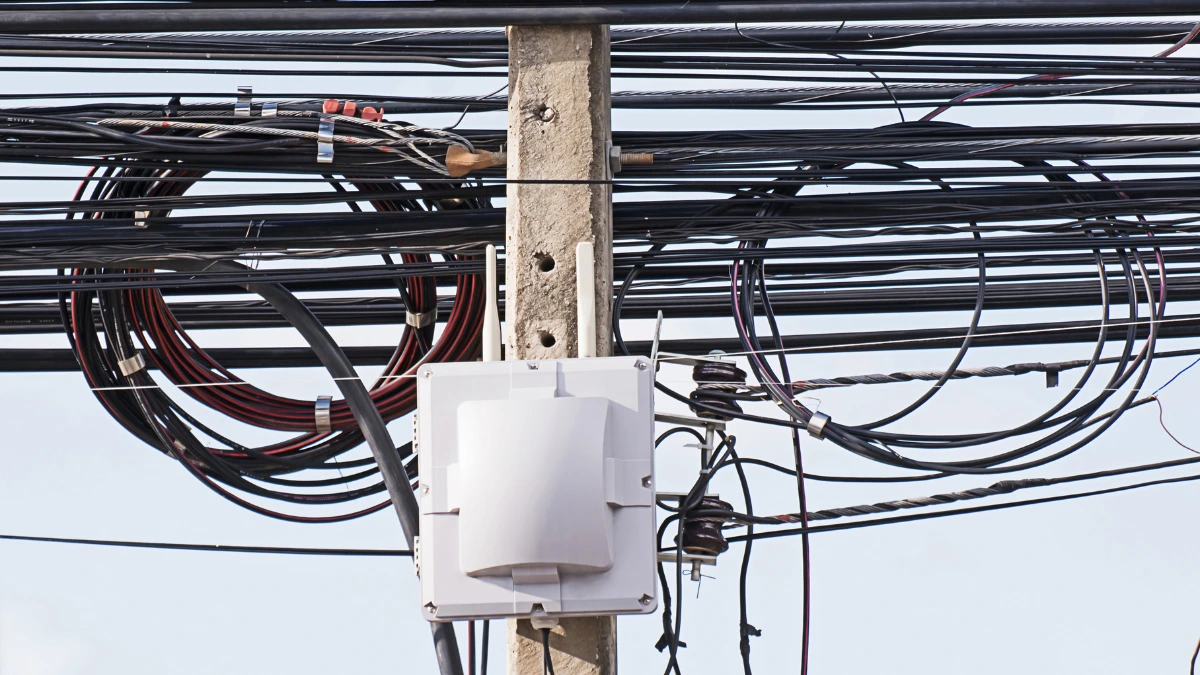Understanding the different types of access points is essential in building a reliable wireless network. Outdoor access point are one type of access point required for outdoor connections.
Outdoor access point are usually placed in the outdoor building. This access point has a huge signal range and that can decrease trouble frequency placed in outdoor areas.
This article will give you information on outdoor access point from definitions, features, and advantages.
Also Read
Table of Contents
What is an Outdoor Access Point?

Outdoor access point are network devices intended for outdoor placement. This type of access point generally has a fairly wide signal range and can minimize frequency interference because it is placed outdoors.
The use of technology is commonly used in city parks, stadiums, or public areas that require WiFi connectivity. Suitable for CCTV surveillance or security systems that require an internet connection outdoors.
Outdoor access point are waterproof, anti-dust, and resistant to extreme weather to keep them functioning in various environmental conditions.
The Feature of Outdoor Access Point

Outdoor Access Point have advantages including the following:
- Resistant to weather conditions: Can withstand a variety of extreme environmental conditions, such as rain, hot sun, or very high or low temperatures.
- Flexible installation: Can be installed in various outdoor locations, such as external walls, poles, trees, or other building structures.
- Equipped with a waterproof protector: Keeps the device safe from water exposure.
- Supports Power over Ethernet (PoE): Allows the use of an external power supply over an Ethernet network.
- Meets IP67 standard: Designed to provide optimal performance and suitable for moderate outdoor use.
- Omni-directional antenna: Provides maximum signal coverage for various usage needs.
- Supports role-based access control: Simplifies account creation and management for guests.
The Advantages of Outdoor Access Point

Outdoor access point have several advantages including the following:
1. Wider coverage
Outdoor access point are designed to provide wider signal coverage, even when there are physical obstacles such as walls or building structures.
This allows the device to connect more devices in a larger area, making it ideal for use in open spaces such as parks, courtyards, or other public areas that require stable connectivity.
2. Stable connection
One of the main advantages of an outdoor access point is its ability to provide a consistent and stable internet connection outdoors.
Despite being located outside a building, these devices can maintain an uninterrupted connection quality, even in unpredictable weather conditions.
This is especially important for applications that require a reliable connection, such as streaming, video conferencing, or outdoor use of IoT devices.
3. Flexibility in placement
Outdoor access point offer flexibility in terms of installation location. These devices can be installed in various open places, be it on the exterior walls of buildings, poles, trees, or other structures, giving users the freedom to customize network settings according to their needs.
With the ability to be installed in various locations, signal coverage and range can be optimized according to preference and ambient conditions.
4. Save management costs
By using outdoor access point, network management costs can be more efficient. These devices allow for wider network deployment without the need for complicated cable installations or additional costs for more expensive hardware.
The practicality of installing and operating these devices can also reduce the need for intensive maintenance, saving money in the long run.
5. Withstand various weather conditions
One of the most important features of an outdoor access point is its ability to operate in various extreme weather conditions. Whether it’s under the scorching sun, heavy rain, strong winds, or even snow, these devices can still function optimally.
Equipped with weatherproof protection, the technology ensure stable and continuous connectivity even when outdoors in challenging weather conditions.
6. Less frequency interference
Outdoor access point are also designed to reduce frequency interference that often occurs when devices are placed indoors.
With outdoor placement, these devices have less physical resistance and interference from other electronic devices, allowing the signal to travel smoother and more stable.
This is especially beneficial in device-heavy environments, such as urban areas, where frequency interference can be problematic.
That’s the definition, features, and advantages of outdoor access point that can be an ideal solution for building networks outdoors, offering convenience, cost efficiency, and reliable performance in various conditions.


















